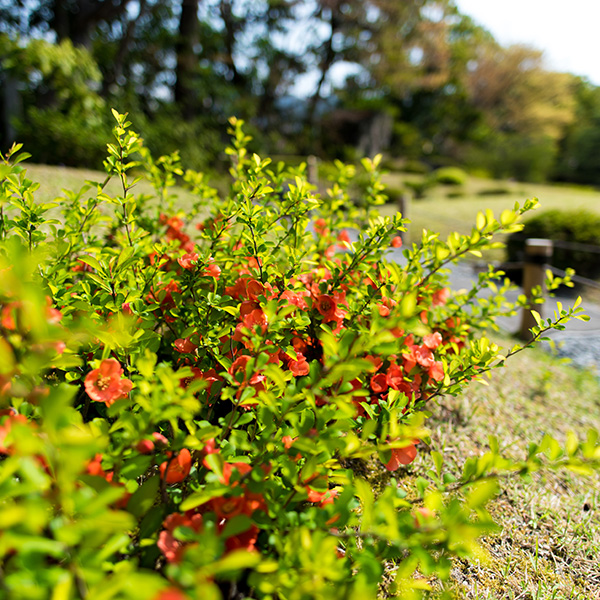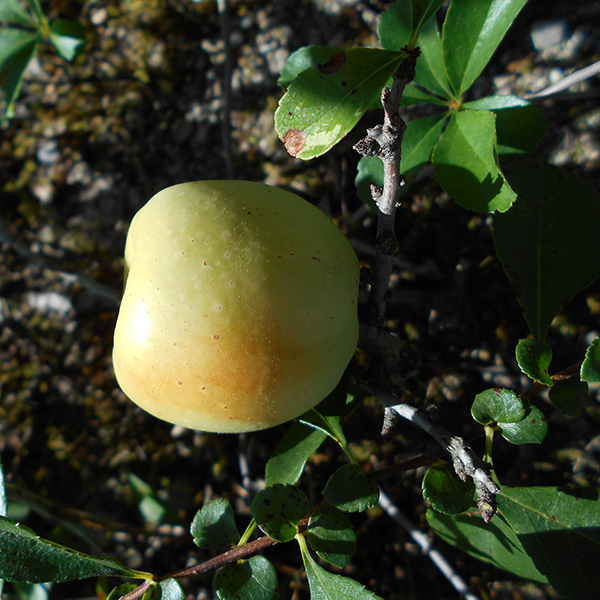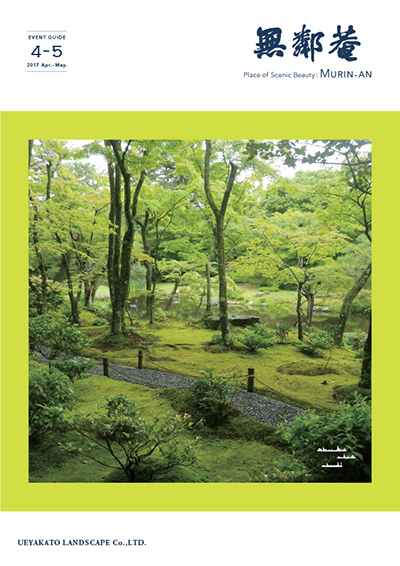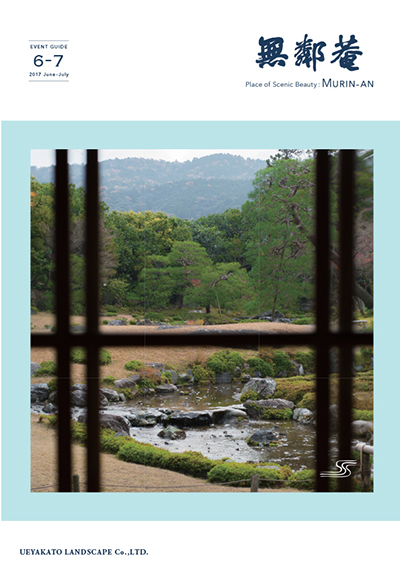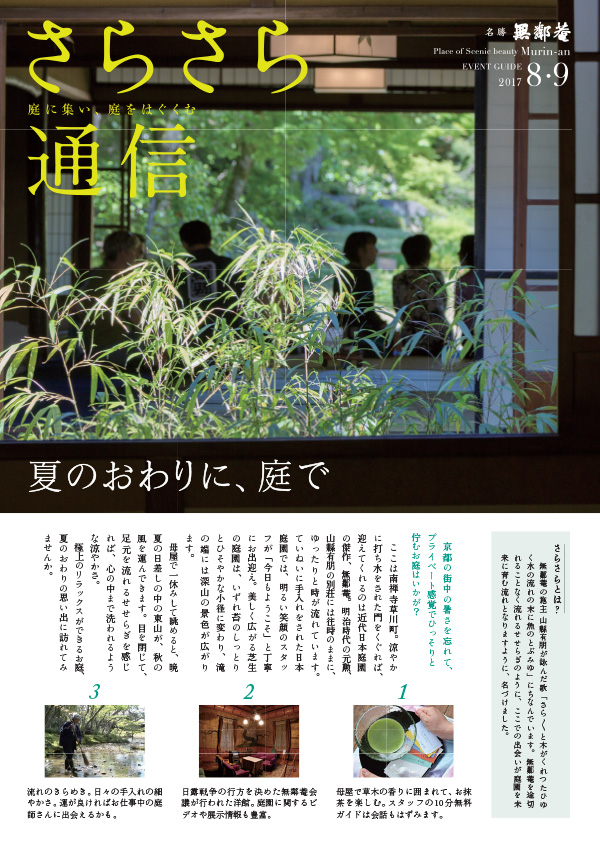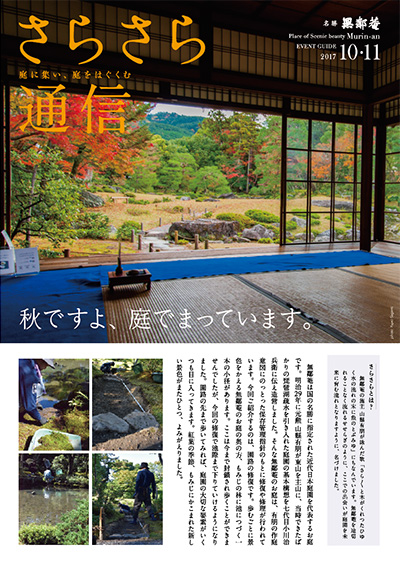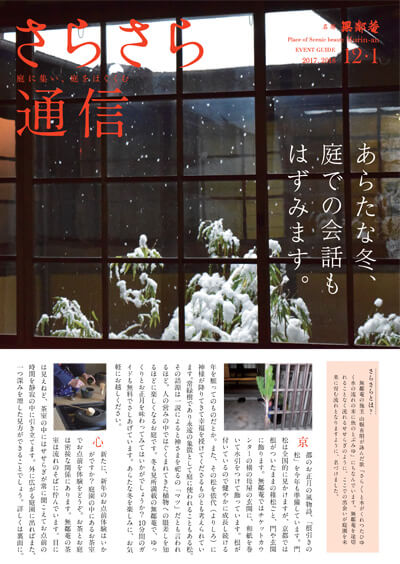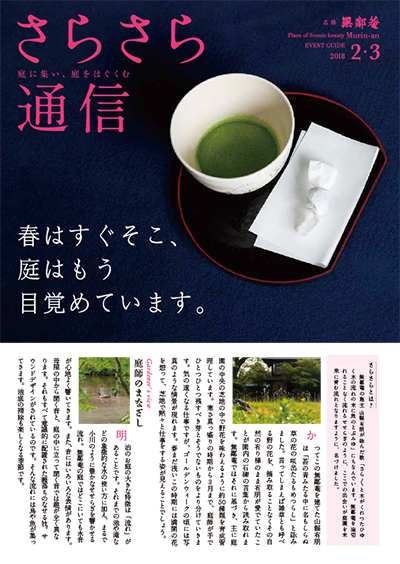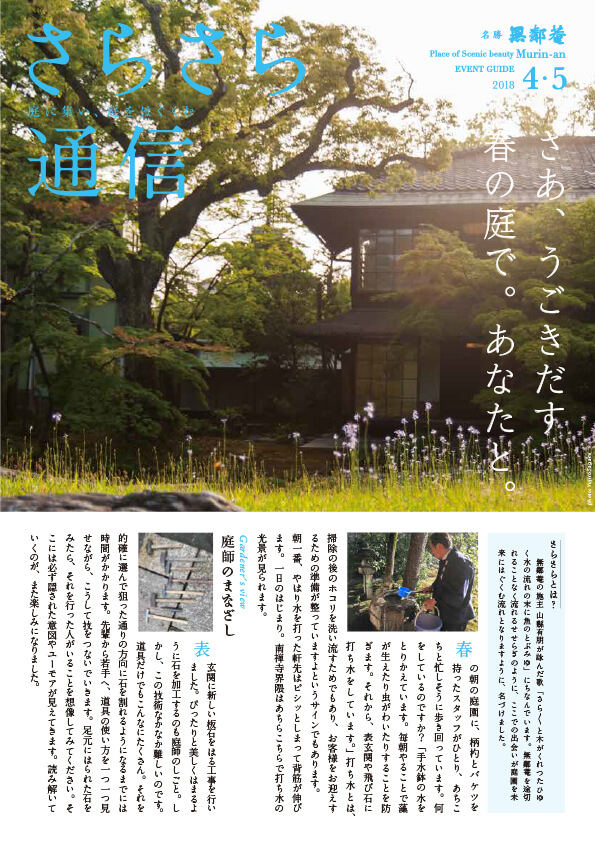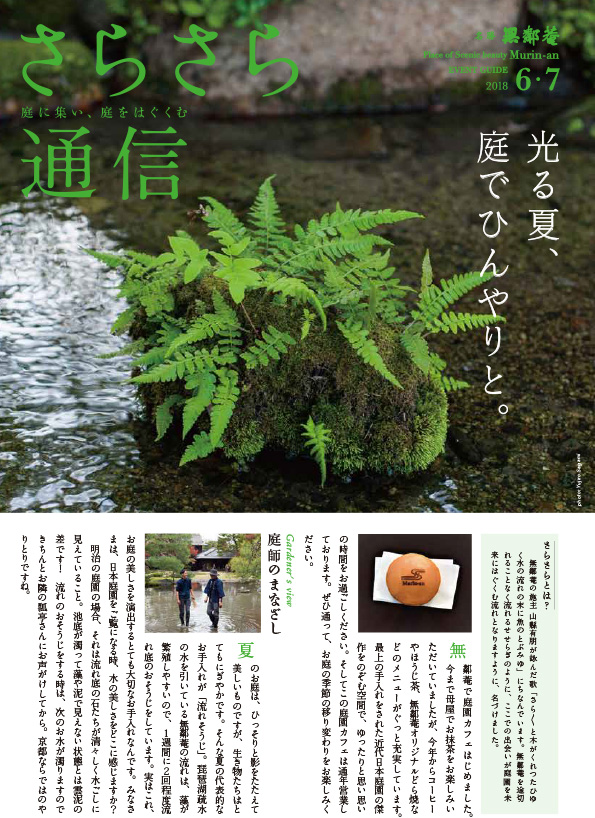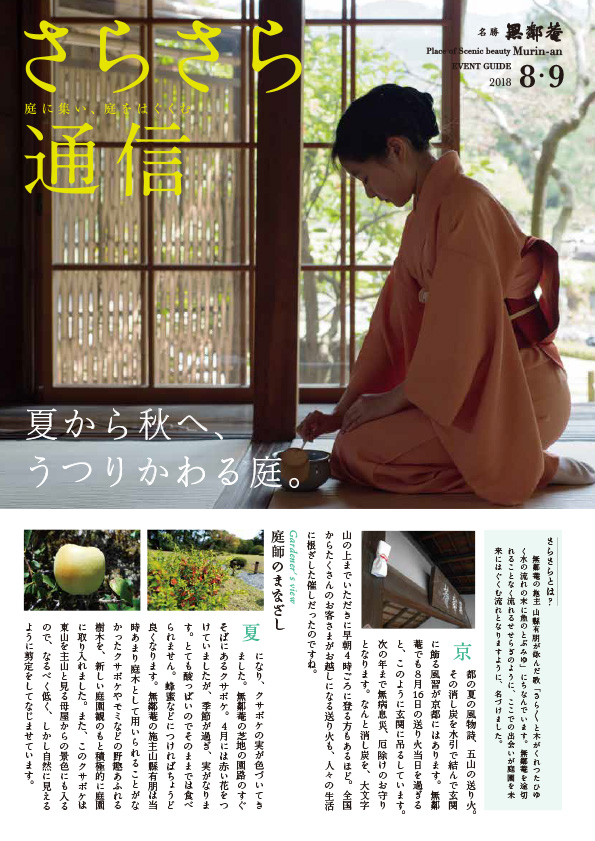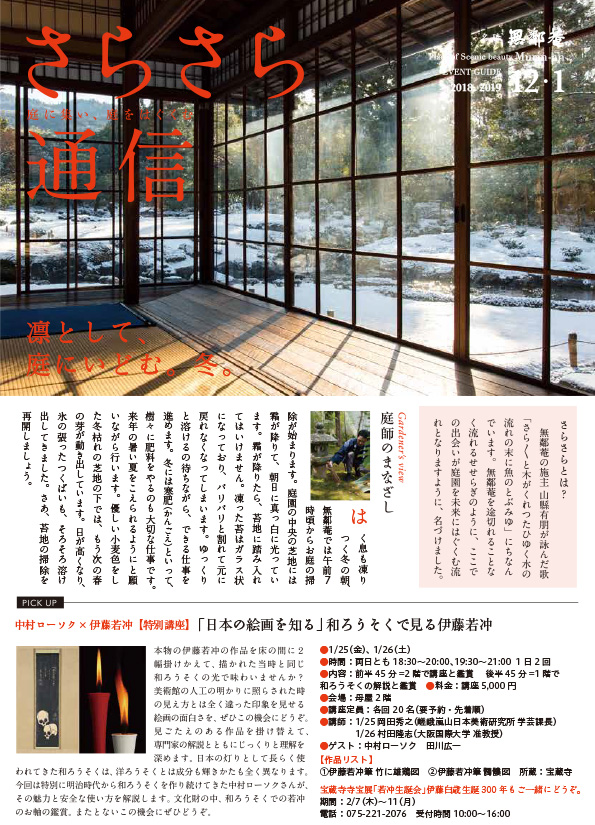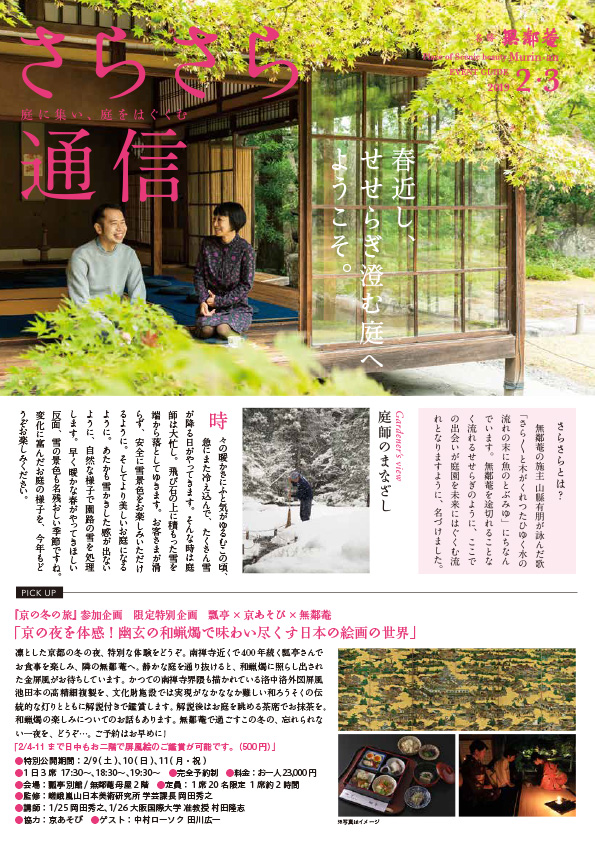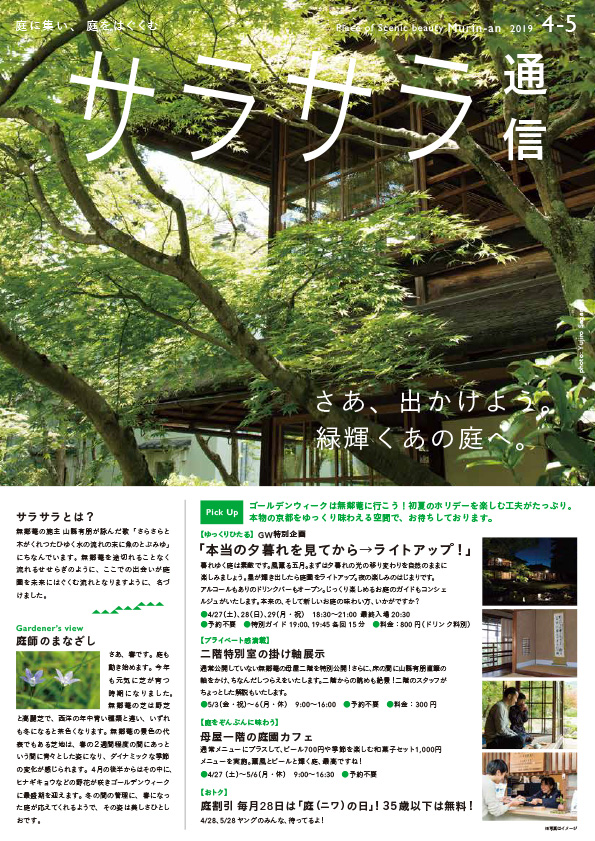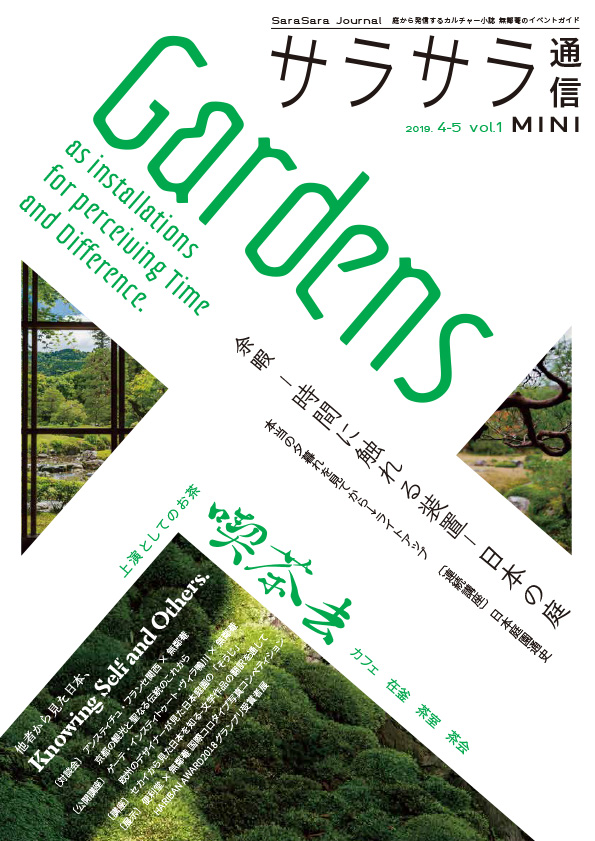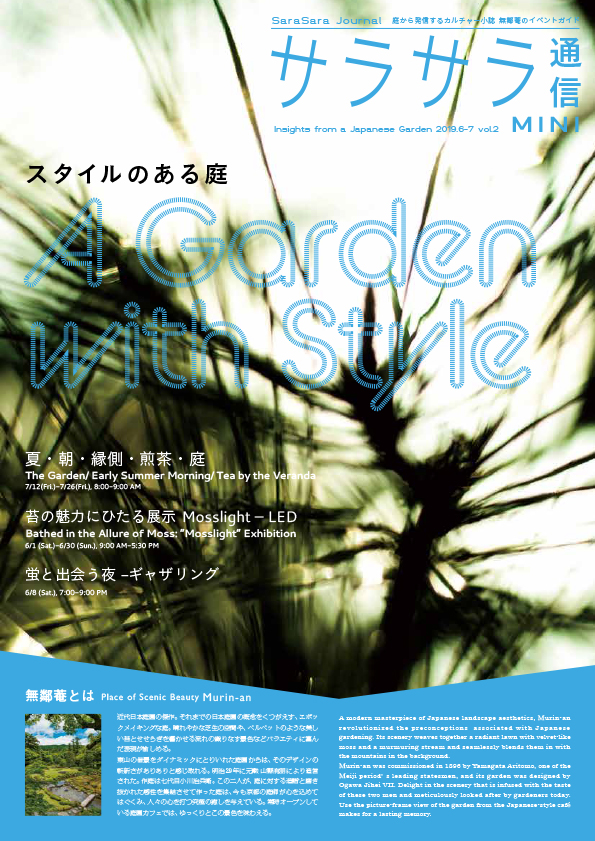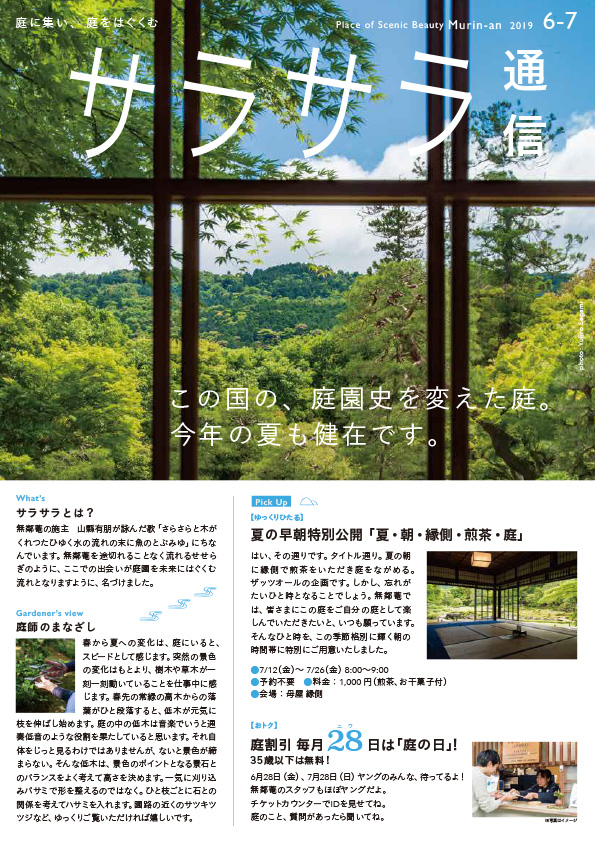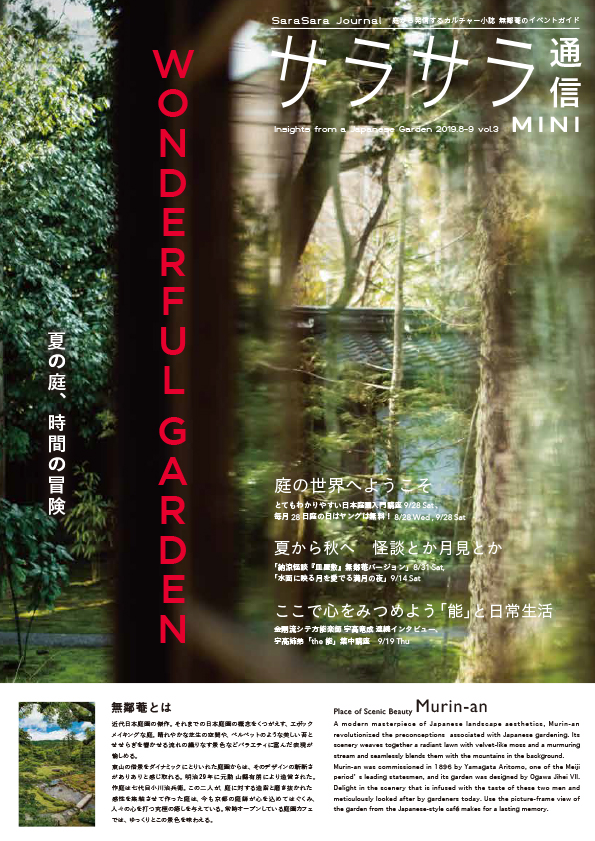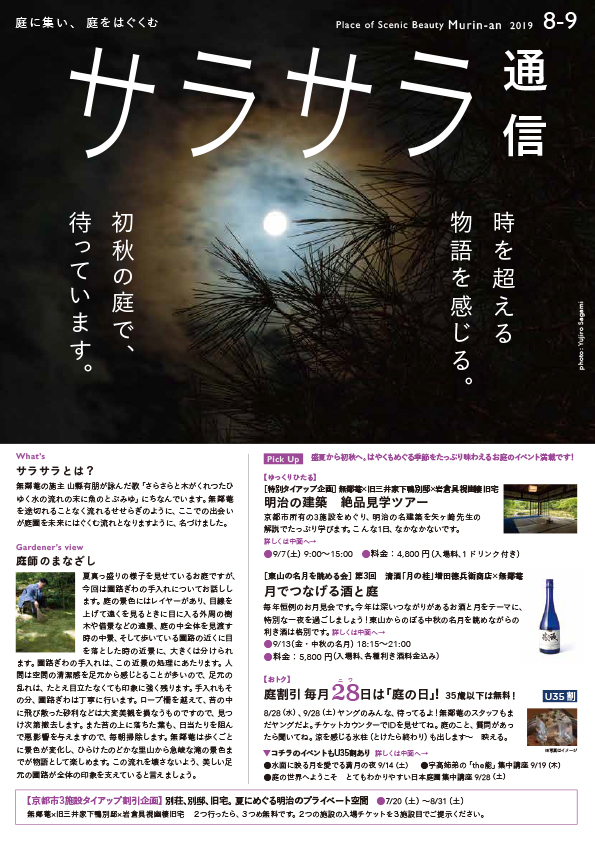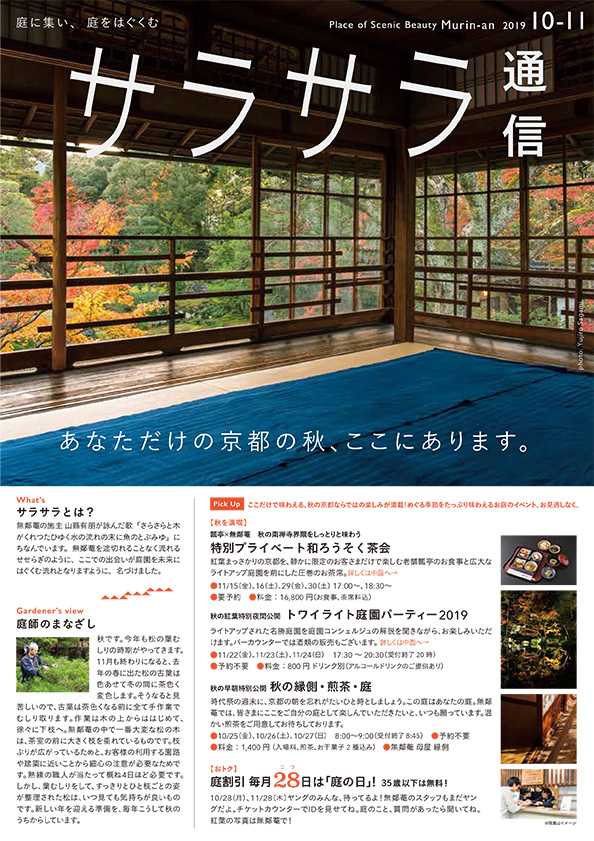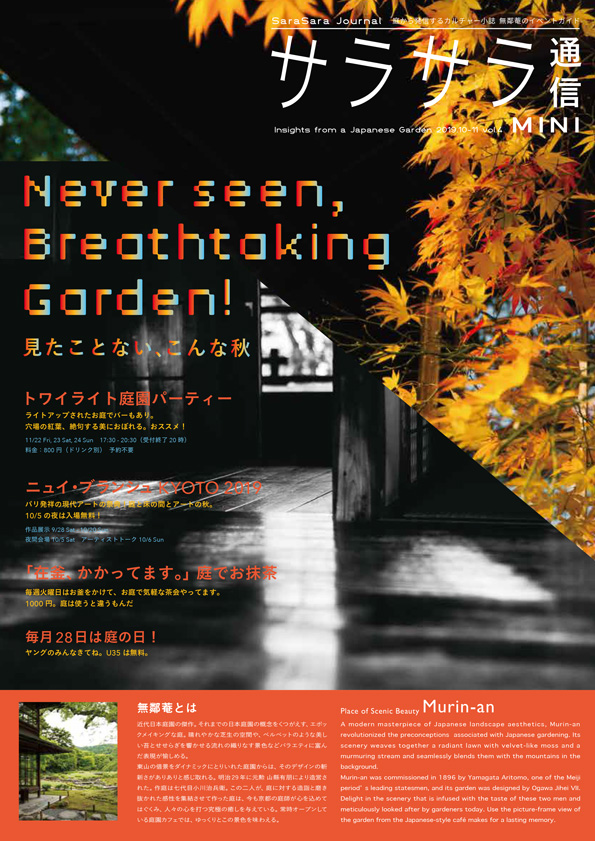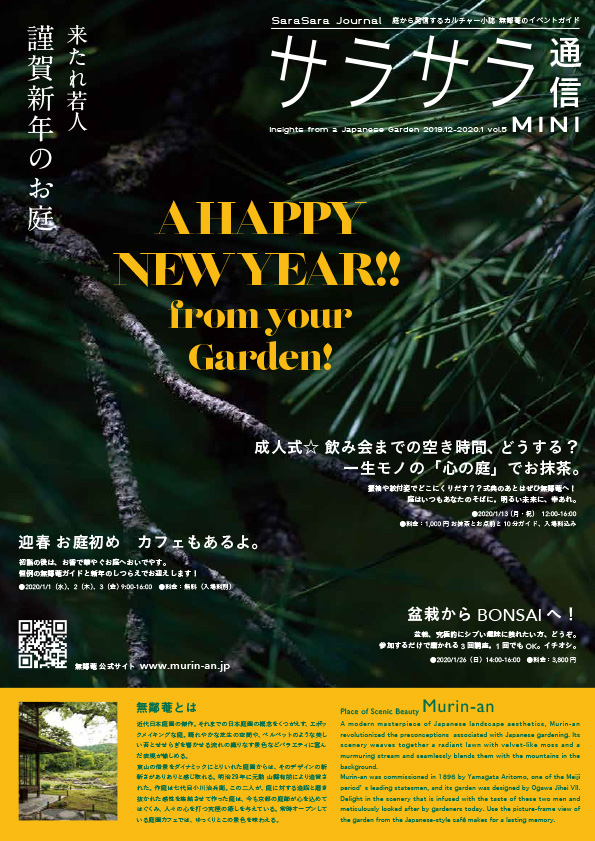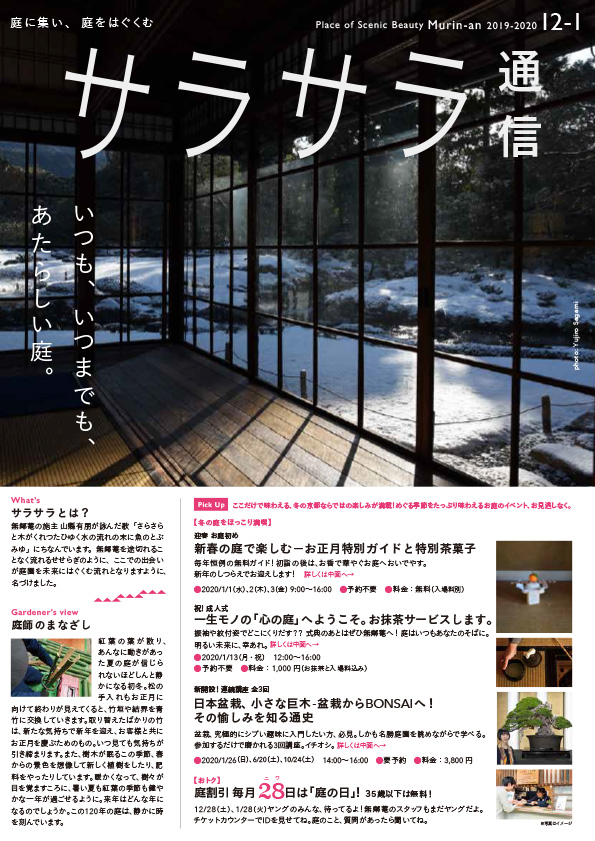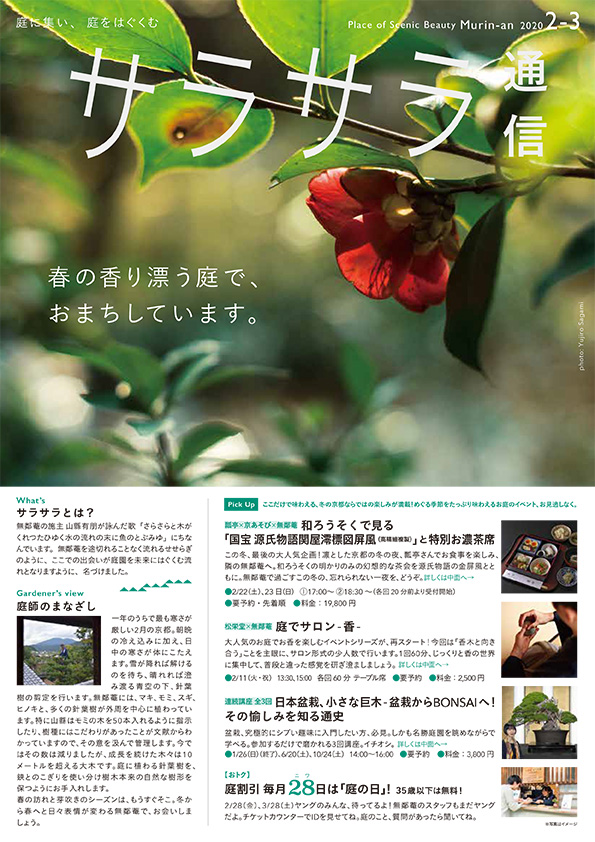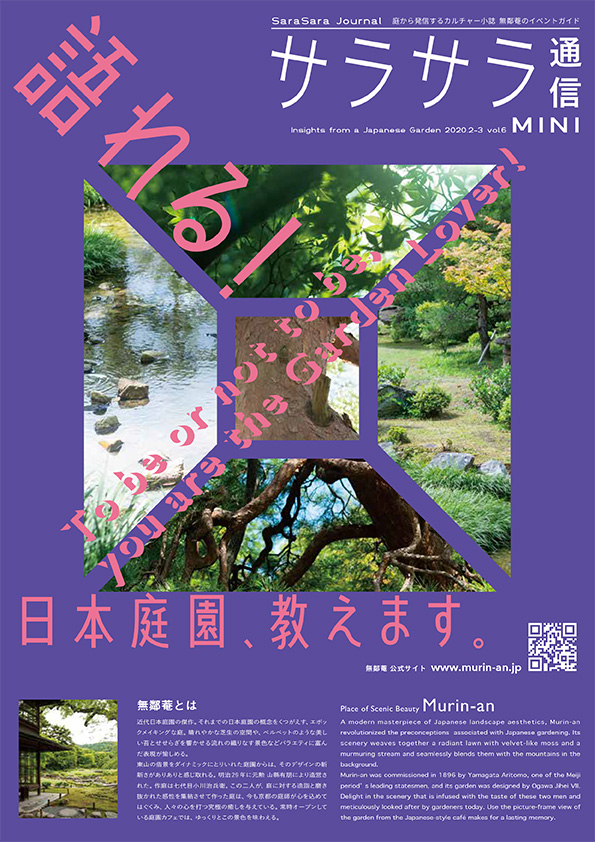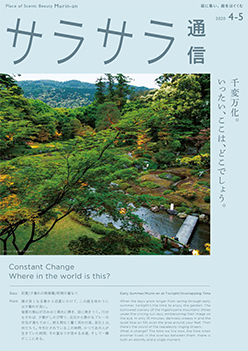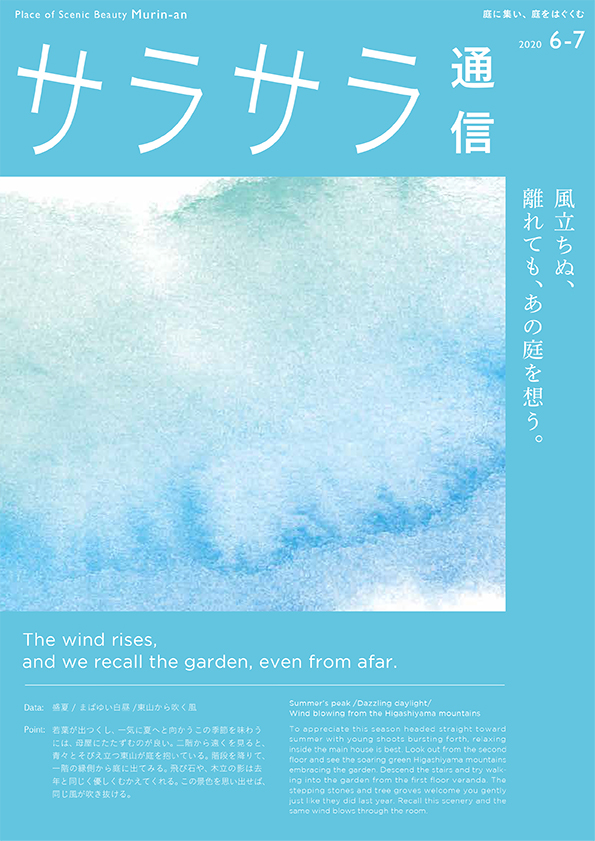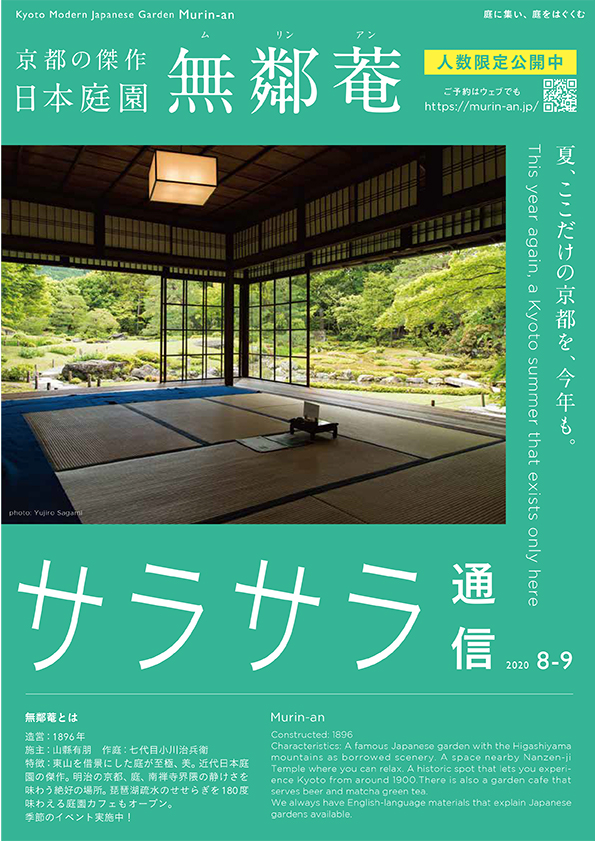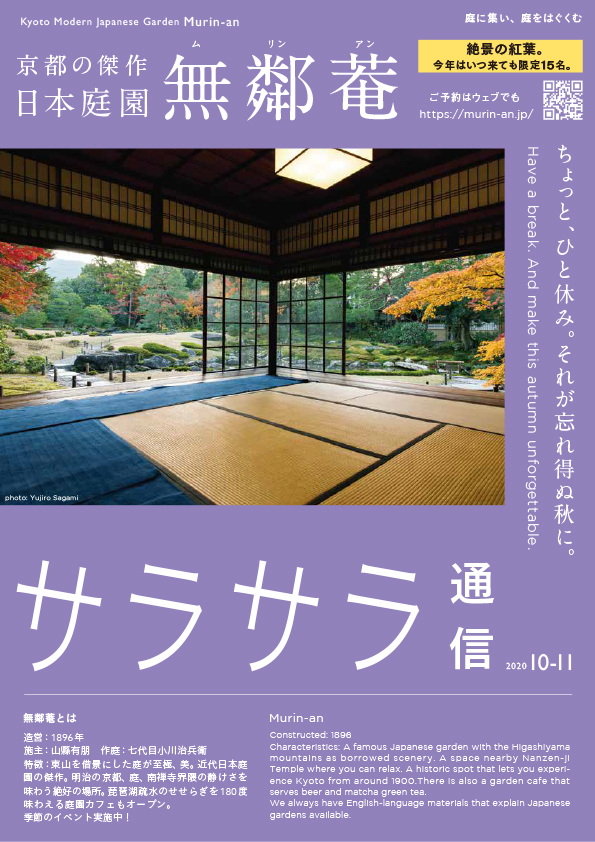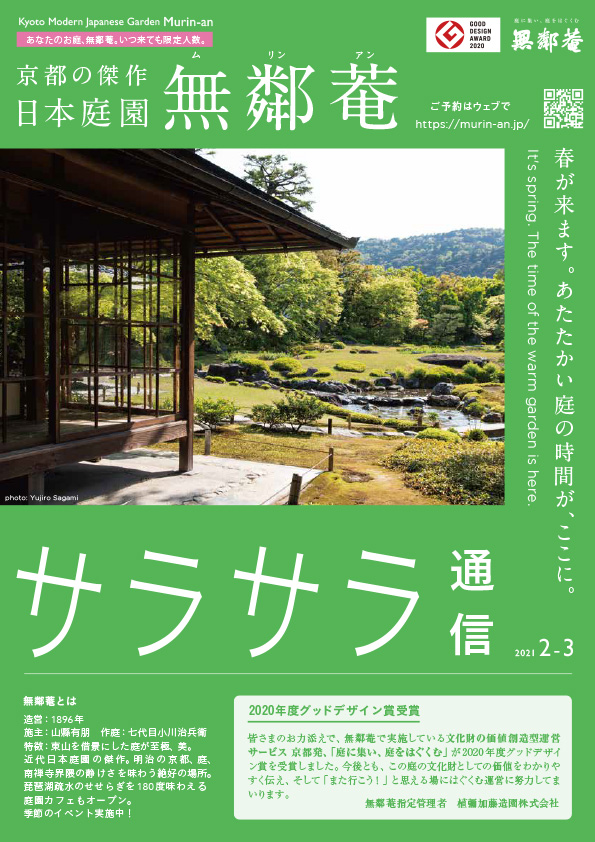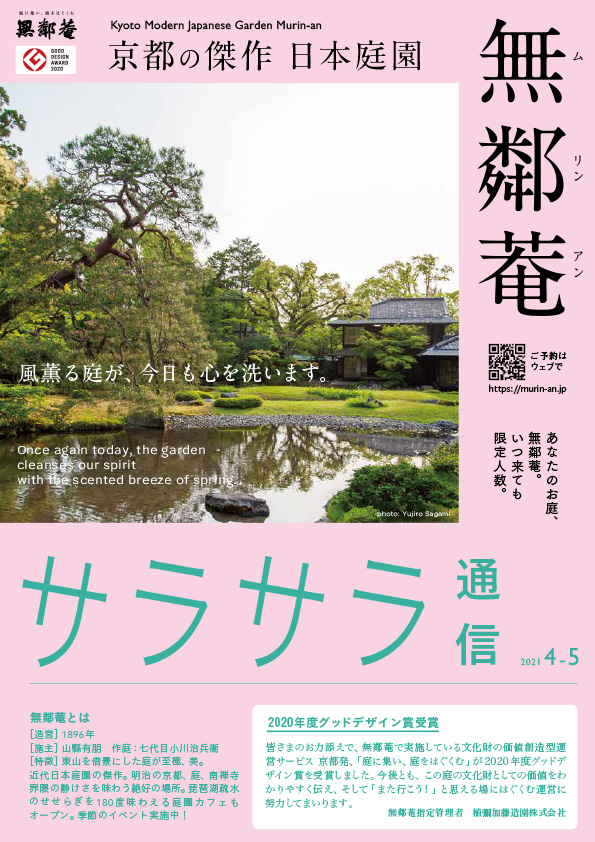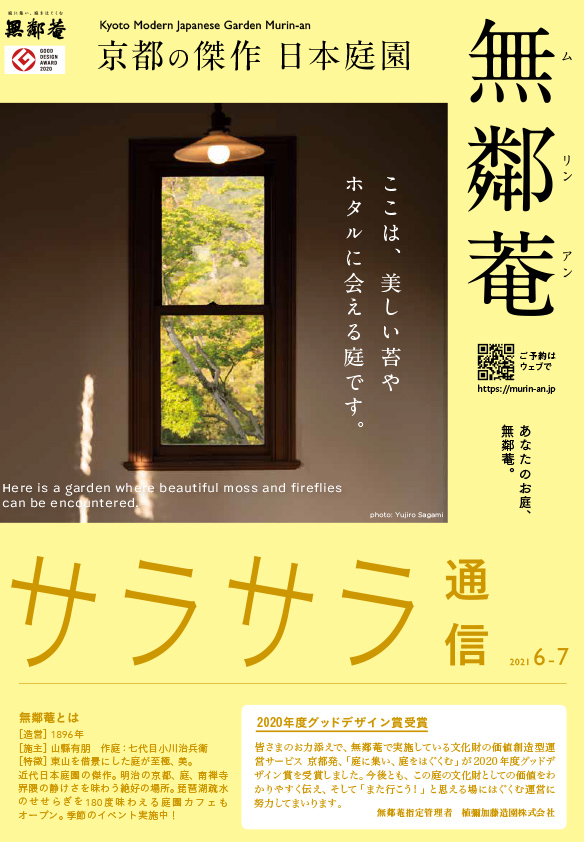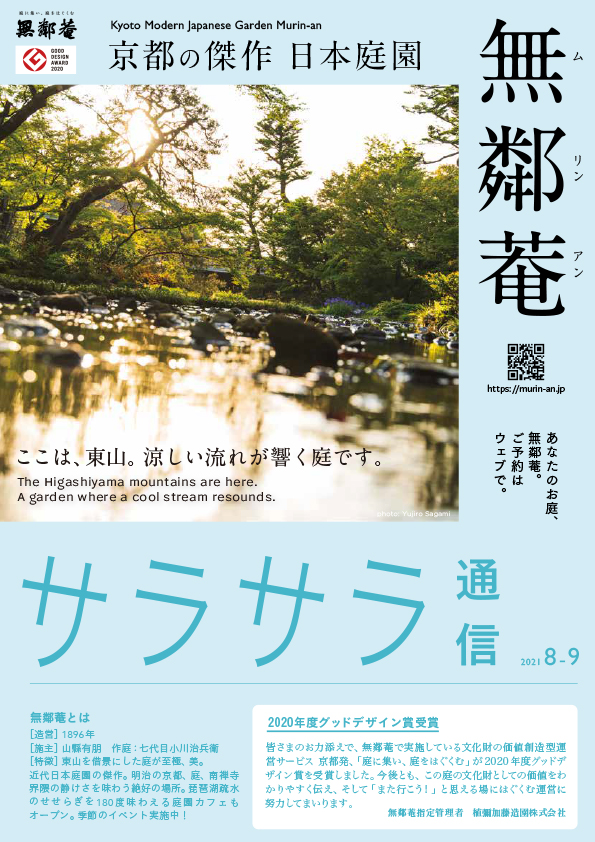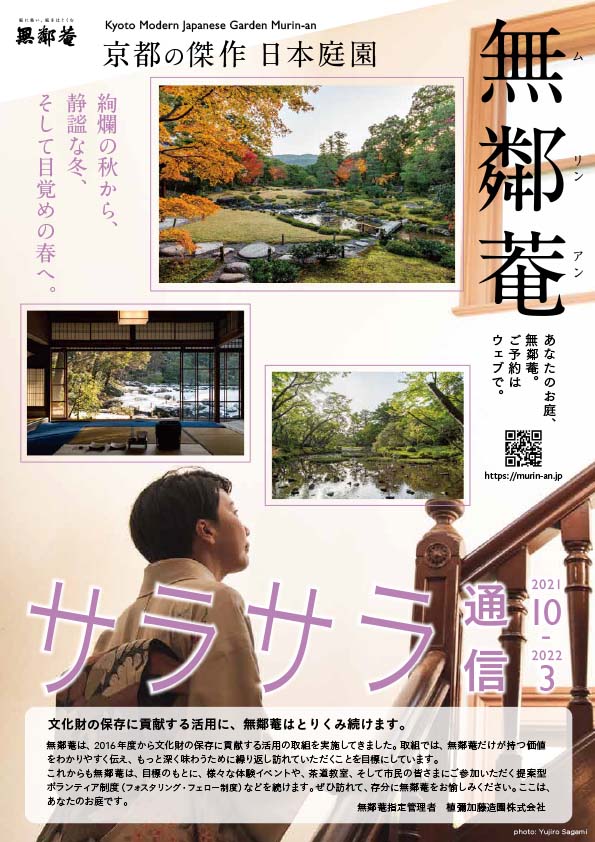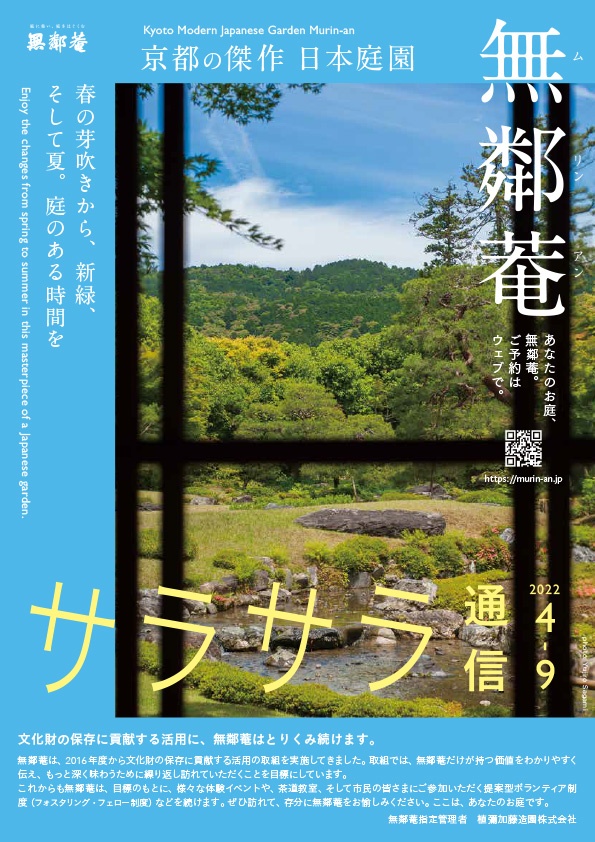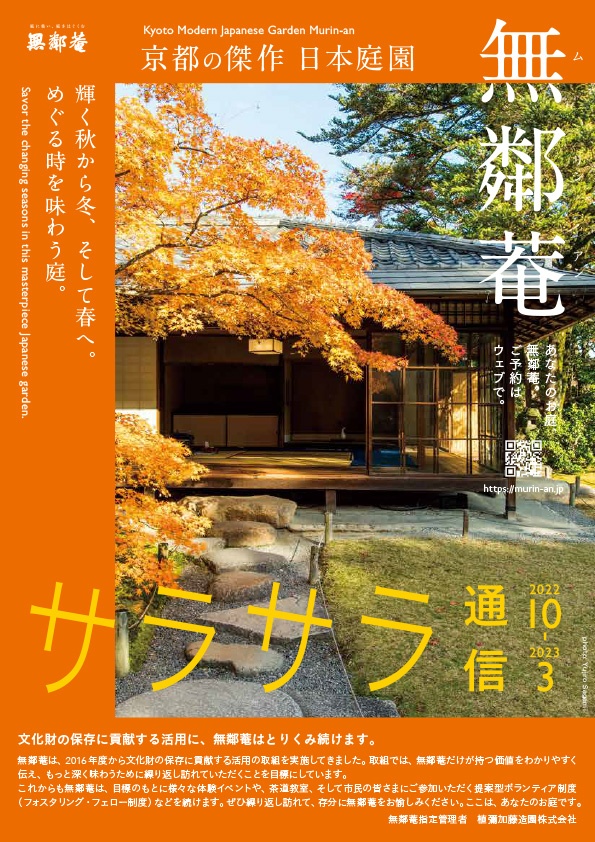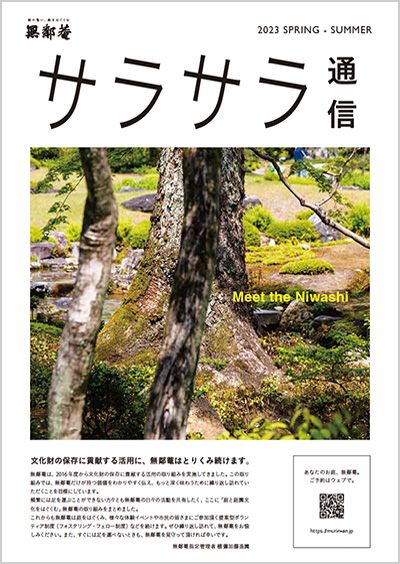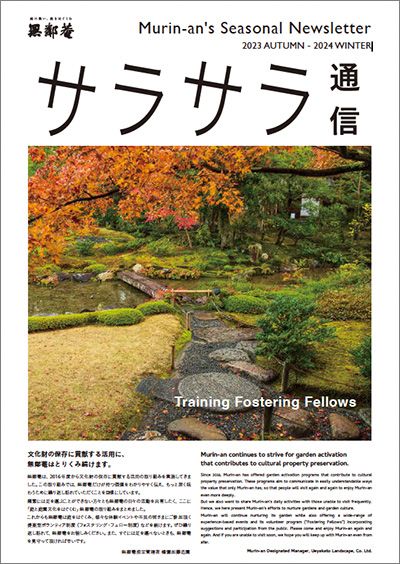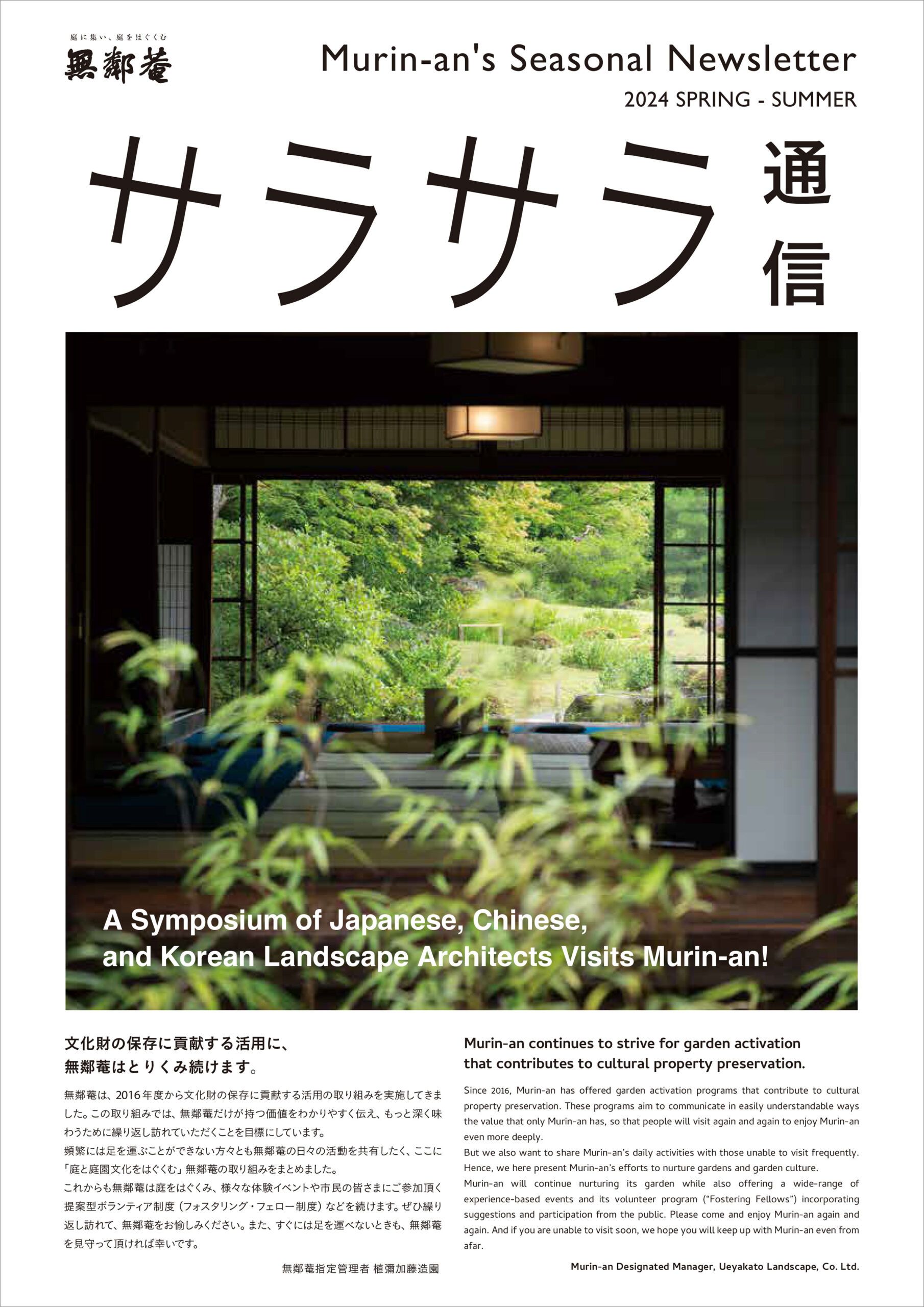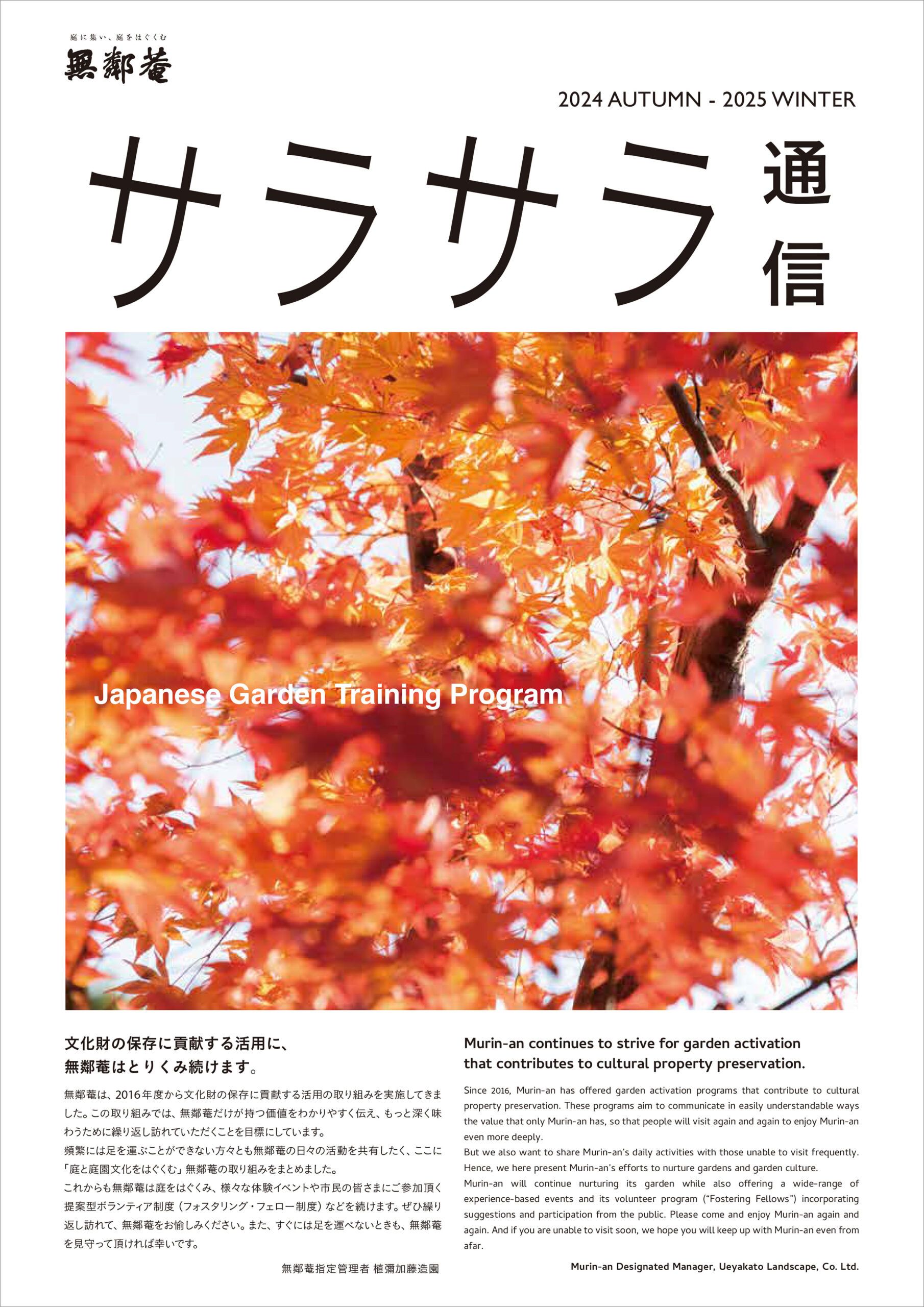Murin-an Periodical
This is the information program of Murin-an Garden.
It provides information on Japanese gardens, invitations to events that help foster the garden and seasonal highlights.
The name of this periodical is Sara-Sara News.
What does “sara-sara” mean? In Japanese, this word is used to evoke a gentle rustle or murmuring sound in nature. We have adopted it from a passage in a poem by Yamagata Aritomo, Murin-an’s original owner. It reads
At the end of a water stream/That murmurs gently as it travels hidden beneath the shade of trees/I see a fish leap
We chose this publication’s title to reflect our hope that, like the ceaseless flow of the murmuring brook flowing around Murin-an, the encounters here will produce a current toward nurturing Japanese gardens for the future.
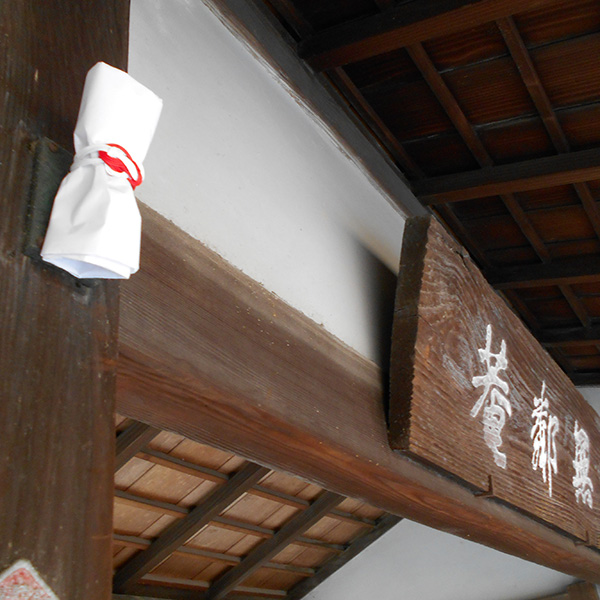
さらさら通信 2018-2019年 12-1月号
The Daimonji Festival: A Kyoto Summer Tradition
It is customary in Kyoto to tie up ashes produced by this festival in a decorative mizuhiki cord and place them inside a house’s foyer area. As you can see from the picture above, after the festival’s fire on August 16, we also hang a mizuhiki cord in the foyer space of Murin-an’s main building. This cord acts as a protective charm against disease and disaster in the year to come. There are even people who climb to the top of Mt. Daimonji as early as 4:00 AM the next morning to get some of the extinguished ash from this festival. Today, people come from all over Japan for the Daimonji Festival, but it is also a festival that has deep roots in the everyday lives of the people of Kyoto.
Gardener’s View
Summer has arrived and our quince fruits are ripening. These quince fruits are located right by the garden path on the Murin-an lawn area. In April, the quince tree had red flowers on it, but with the passing of spring, it began to bear fruit. The flavor of the fruits is so sour that they cannot be eaten by themselves. They taste best when dipped in something sweet like honey. Murin-an’s owner Yamagata Aritomo used his own original view of gardens to incorporate trees such as quinces and firs that were filled with a rustic beauty, but had hardly ever been used as garden trees before. Because this quince tree also makes up part of the scenery seen from the main building, for which the Higashiyama mountains are the center point, we blend it in by pruning it as low as possible while still maintaining its natural appearance.
